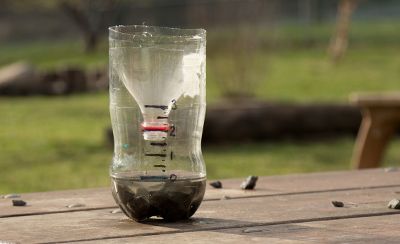Compare the Leading Rain Gauge Versions for Accurate and Consistent Analyses
Compare the Leading Rain Gauge Versions for Accurate and Consistent Analyses
Blog Article
Revealing the Science Behind Rainfall Evaluates: Exactly How These Instruments Play a Vital Role in Climate Research Study and Ecological Tracking
Rain assesses, seemingly easy tools, hold a profound relevance in the world of climate study and ecological monitoring. These simple instruments quietly accumulate one of nature's most important elements-- rainfall. Behind their plain facade exists an intricate scientific research that is vital for comprehending the characteristics of our setting. As we peel off back the layers of this scientific veil surrounding rainfall evaluates, we discover a globe where precision, data precision, and thorough monitoring converge to introduce a much deeper understanding of our transforming climate and its impact on the world.
Significance of Rain Gauges
Rain evaluates play an important role in surveillance and determining rainfall degrees, supplying vital information for environment research study and evaluation. These tools are essential in measuring the amount of rains that occurs in a particular location over a specific period. By accumulating and measuring rainwater, rainfall assesses deal beneficial understandings right into the distribution and intensity of precipitation, aiding meteorologists, hydrologists, and climatologists in comprehending weather patterns and fads.
Furthermore, long-term data collected from rain assesses assists in examining climate modification influences and patterns, adding significantly to scientific research and decision-making procedures. In essence, rain determines serve as vital devices in the area of meteorology and environmental science, playing an essential role in advancing our understanding of weather condition and climate dynamics.
Sorts Of Rain Gauges

Functionality and Procedure
In the world of environment research and meteorological researches, the efficiency of rain assesses lies in their intricate performance and accurate functional devices. Rainfall assesses are made to precisely measure the amount of precipitation that drops over a particular location throughout a collection duration.
The performance of rainfall gauges is based upon the principle of accumulating and determining rain in a standardized way. This gathered information is important for recognizing regional climate patterns, tracking lasting environment patterns, and evaluating ecological influences. To guarantee exact dimensions, rainfall determines demand to be strategically positioned in open areas away from blockages such as structures or trees that can hinder the collection process.
The operational facet of rainfall assesses entails routine maintenance to avoid particles accumulation, calibration checks to preserve dimension precision, and data videotaping for analysis (rain gauge). Generally, the capability and procedure of rain assesses are necessary directory for collecting reputable precipitation information vital to environment research and ecological tracking
Role in Climate Study
Provided the vital importance of precise precipitation dimensions in recognizing weather patterns and environmental influences, the role of rainfall determines in environment research is vital. Rainfall assesses offer necessary information for environment research by quantifying the quantity of rainfall that drops over a details area throughout an offered period. This data is vital for keeping an eye on lasting trends in precipitation patterns, assessing the effect of environment modification on rains circulation, and improving climate designs.

Environment researchers utilize information collected from rainfall gauges to evaluate variants in rainfall degrees, recognize local environment trends, and review the effectiveness of water source administration techniques. By comparing historic rainfall information with existing measurements, scientists can spot changes in precipitation patterns, such as changes in the regularity or intensity of rains events. This information is important for comprehending how environment change is affecting rainfall characteristics and can assist policymakers make educated choices regarding adjustment and mitigation techniques.
Applications in Environmental Tracking

In flooding projecting, rain scale data helps to track rainfall strength and distribution, allowing authorities to release timely warnings and take needed steps to reduce flooding threats (rain gauge). Drought surveillance counts on rain scale information to examine wetness degrees in the dirt and track precipitation deficiencies, helping in the identification of drought-prone areas and the implementation of drought response strategies
Furthermore, rain gauge information plays an important function in water source monitoring by providing details on water schedule and use fads. In addition, in farming, rain scale data helps farmers in maximizing watering routines, crop choice, and overall ranch management practices based on regional rainfall patterns.
Verdict
Finally, rain assesses are essential tools for gauging rainfall, giving beneficial information for climate study and environmental surveillance. With different types and functionalities, rainfall determines play an essential duty in comprehending rainfall patterns and their influence on the setting. By accurately gauging rains, these devices add to the innovation of scientific knowledge and assistance in making notified choices pertaining to water resource management and calamity readiness.
Rain determines play an indispensable role in monitoring and measuring precipitation levels, giving crucial data for environment research and analysis. The basic rainfall gauge, understood as the "tipping pail" gauge, is one of the most commonly utilized devices. Ultrasonic rainfall gauges use sound waves to discover the visibility of rain, giving real-time information on More Info rainfall degrees.Climate researchers make use of data gathered from rainfall determines to evaluate variants in precipitation degrees, recognize local environment patterns, and examine the effectiveness of water source administration techniques.In final thought, rain determines are necessary devices for determining precipitation, offering beneficial data for climate research study and environmental tracking.
Report this page